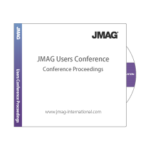Makoto Matsushita
Motor and Drive System Technology Group, Electrical/Mechanical Systems and Power Electronics R&D Dept, Infrastructure Systems Research and Development Center, Toshiba Infrastructure Systems & Solutions Corporation
/Takashi Nakaoka
JSOL Corp.
Abstract
In order to prevent short circuits in magnetic flux and to efficiently convert magnetic force into a mechanical output (torque), permanent magnet motors are provided a flux barrier around the vicinity of the magnet. In order to suppress flux leakage to the adjacent pole, improvements can be made to motor properties by making the narrow portion known as the bridge as thin as possible. But in order to prevent rotor failure as a result of centrifugal stress during high rotation speeds, there are times when stress on the bridge portion must be of a certain value or less. As so to prevent any mechanical issues that may occur during these high rotation speeds, it is necessary to carry out a motor analysis that considers the tradeoff relationship of centrifugal stress and motor properties.
In the analysis of rotor centrifugal stress of a permanent magnet motor and motor properties, what generally occurs is an exploration of motor geometry that meets the needed requirements while also making minute adjustments to FB geometry. It cannot be said that this necessarily constitutes an exploration of a wider design space, however. Ideally, an optimized geometry could be obtained where holes to insert magnets while also including a flux barrier are generated automatically, and both requirements concerning centrifugal stress and motor properties are satisfied. This would result in a considerable reduction in investigation lead time, but at present this is difficult to achieve. If a geometry closest to that of the most optimal model possible can be obtained, then the amount of time dedicated to verifications can be reduced by investigating that model as early as possible, despite this not being entirely the best solution.
This reports on the use of the optimization engine equipped with PSL and JMAG to calculate permanent magnet motor properties and rotor centrifugal stress, and attempts to analyze a model that satisfies both requirements.
You need to sign in as a Regular JMAG Software User (paid user) or JMAG WEB MEMBER (free membership).
By registering as a JMAG WEB MEMBER, you can browse technical materials and other member-only contents for free.
If you are not registered, click the “Create an Account” button.
Create an Account Sign in



